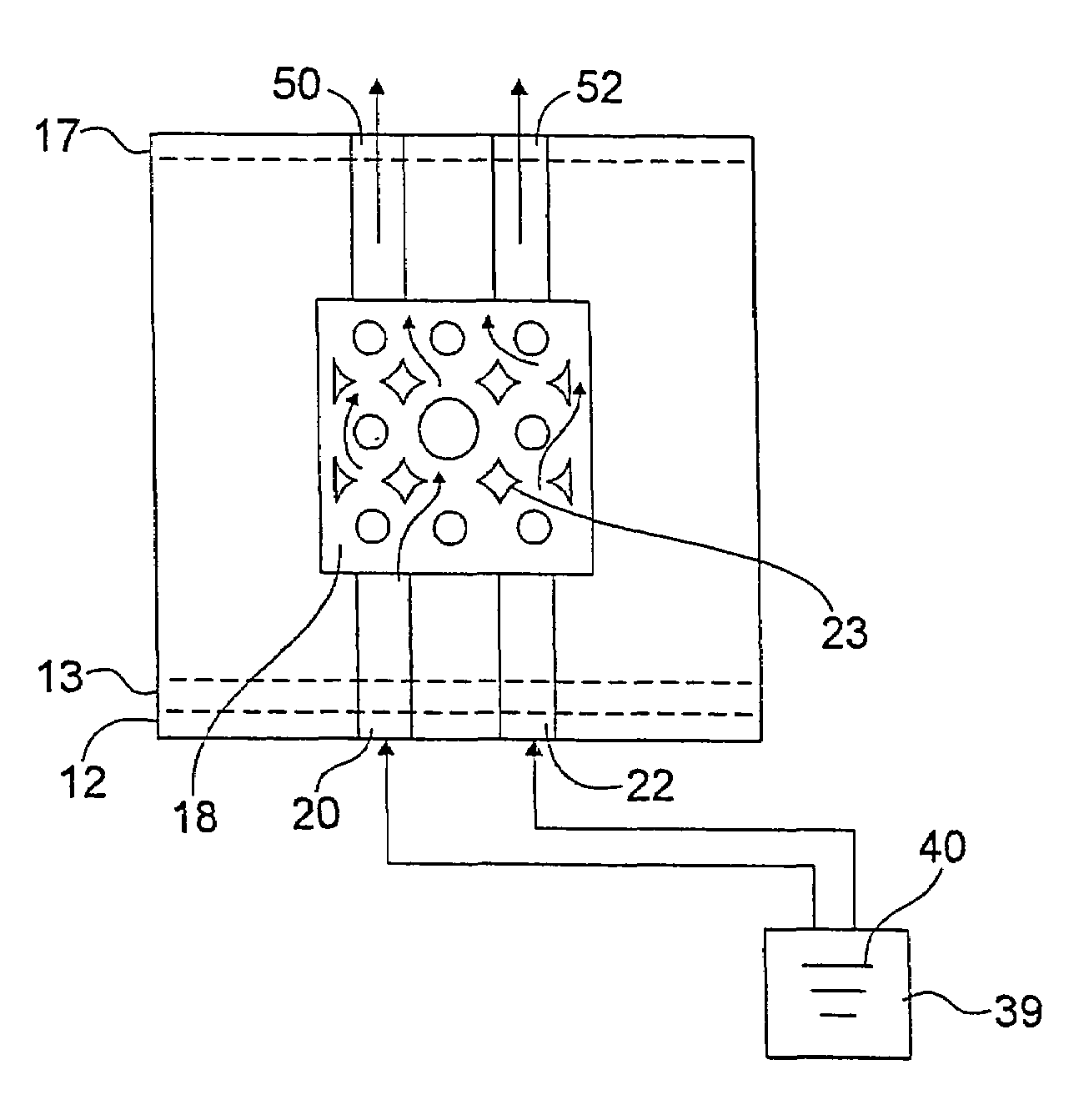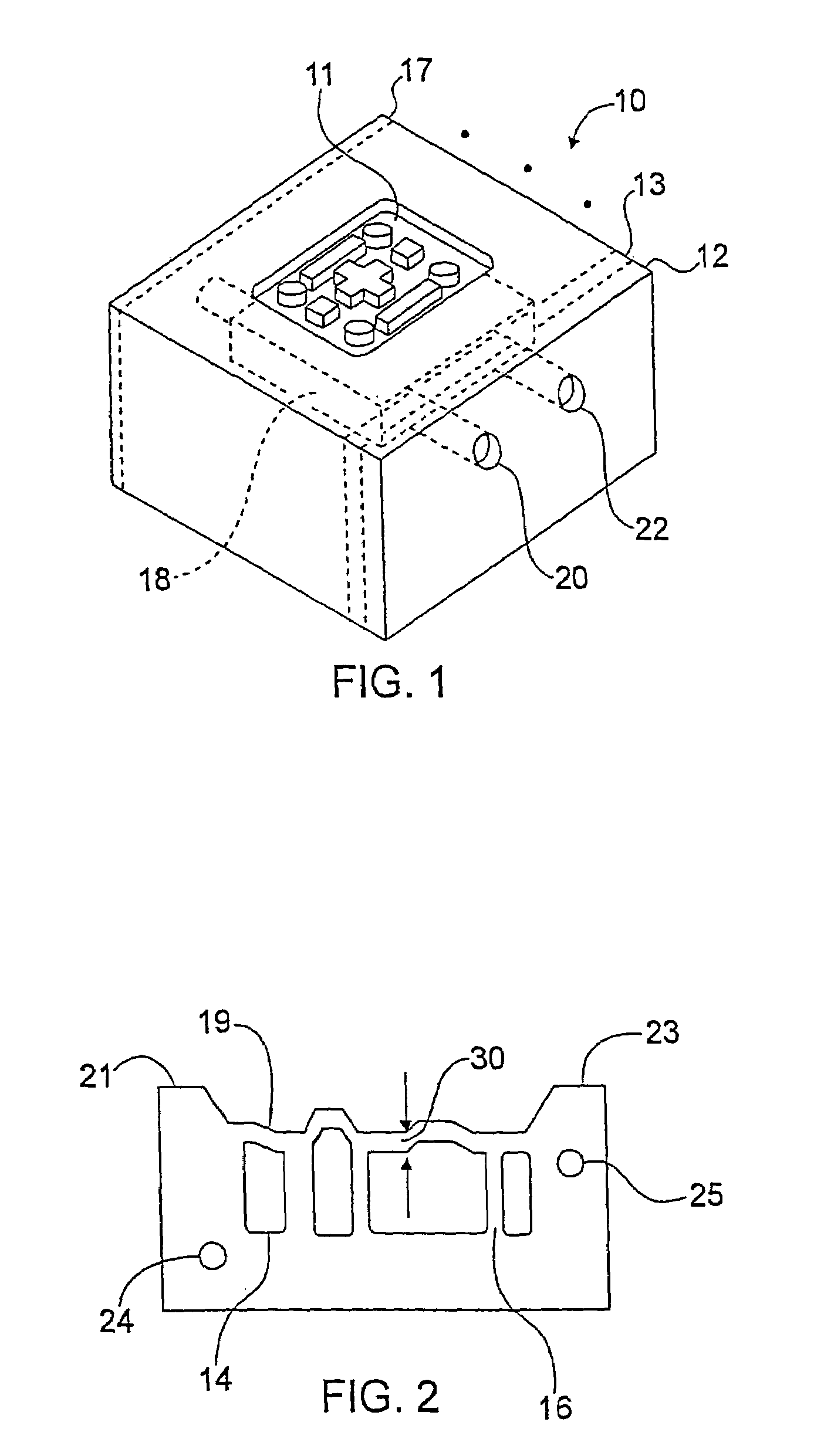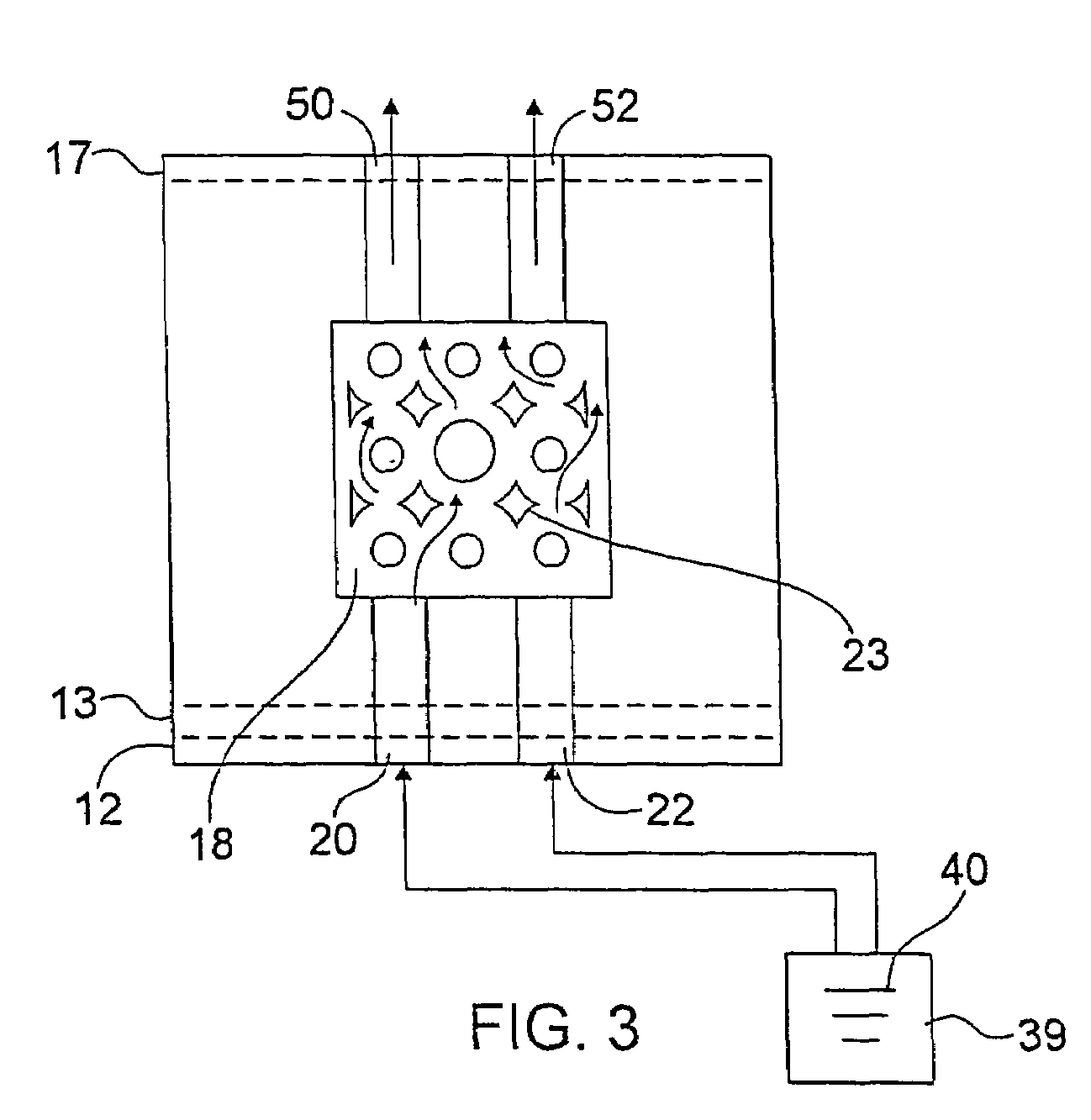System and a method for cooling a tool
- Summary
- Abstract
- Description
- Claims
- Application Information
AI Technical Summary
Benefits of technology
Problems solved by technology
Method used
Image
Examples
Embodiment Construction
[0019]Referring now to FIGS. 1 and 2, there is shown a tool 10 which is made in accordance with the teachings of the preferred embodiment of the invention. It should be realized that tool 10 may be of any substantially desired shape or geometric configuration and that nothing in this Application is intended to limit the applicability of the invention to a particular type of tool or apparatus. Rather, the tool 10 is only one non-limiting example of a tool which may be produced according to the invention. In the preferred embodiment of the invention, tool 10 comprises a mold member having a contoured forming or mold surface 11.
[0020]As shown best in FIGS. 1 and 2, mold surface 11 is formed by the coupling of a plurality of adjacent sectional members (e.g., members 12–17). That is, at least one of these sectional members 16 include a predetermined contour or shape 19 formed into its “top” surface 21. As each adjacent section member 12–17 is connected together, each contour 19 cooperate...
PUM
| Property | Measurement | Unit |
|---|---|---|
| Time | aaaaa | aaaaa |
| Time | aaaaa | aaaaa |
| Thickness | aaaaa | aaaaa |
Abstract
Description
Claims
Application Information
 Login to View More
Login to View More - R&D Engineer
- R&D Manager
- IP Professional
- Industry Leading Data Capabilities
- Powerful AI technology
- Patent DNA Extraction
Browse by: Latest US Patents, China's latest patents, Technical Efficacy Thesaurus, Application Domain, Technology Topic, Popular Technical Reports.
© 2024 PatSnap. All rights reserved.Legal|Privacy policy|Modern Slavery Act Transparency Statement|Sitemap|About US| Contact US: help@patsnap.com










